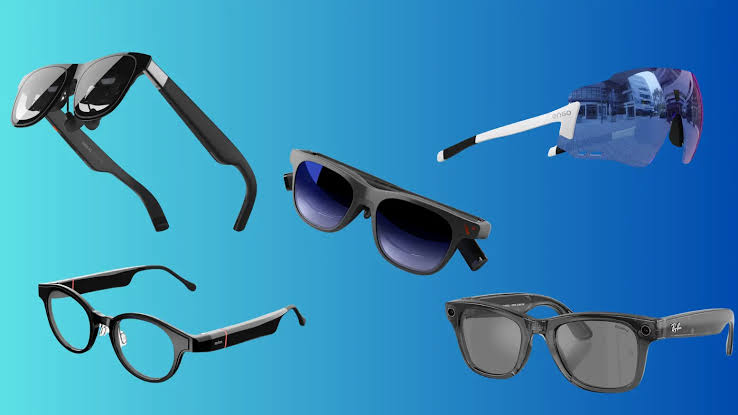Why Modular Gadgets Are Gaining Popularity in 2025: In a world increasingly shaped by customization, sustainability, and user-centric innovation, modular gadgets have emerged as a standout trend in 2025. From smartphones and laptops to smart home devices and wearables, modularity is transforming how we interact with technology. The shift isn’t just a fleeting fad it’s a sign of a broader movement toward adaptability, longevity, and environmental consciousness.

This guide explores why modular gadgets are gaining traction in 2025, what’s fueling their growth, the key advantages they offer, and how consumers and industries alike are benefiting.
What Are Modular Gadgets?
Modular gadgets are devices designed with interchangeable or upgradeable components. Instead of buying an entirely new device, users can swap out or add specific modules like a better camera, more memory, or different sensors to suit their needs.
Think of it as building with Lego blocks: the core system remains intact, but individual parts can be replaced, enhanced, or customized without discarding the entire product.
Why Modular Gadgets Are Trending in 2025
1. Sustainability and E-Waste Reduction
E-waste has become a pressing global issue. In 2025, an estimated 65 million metric tons of electronic waste is projected to be generated worldwide. Modular devices offer a greener alternative by enabling repair, reuse, and upgrades without discarding entire products.
By extending the life of a device through modular upgrades, users reduce their environmental footprint, making modular tech a key player in the circular economy.
2. Cost-Effective Upgrades
Instead of buying a new laptop every 2–3 years, modular designs let users upgrade the processor, RAM, or battery individually. This makes it more economical, especially for students, creatives, and professionals working with tight budgets.
For instance, a modular smartphone allows users to install a 5G module or a high-resolution camera without replacing the entire device.
3. Personalization and Customization
Consumers in 2025 value personalization more than ever. Modular gadgets empower users to build devices tailored to their needs:
- A content creator might add a high-quality microphone or video module to their phone.
- A gamer might prioritize cooling modules or additional RAM.
- A traveler might opt for extra battery packs or global SIM card trays.
This freedom to customize aligns with the broader shift toward user-defined experiences.
4. Repairability and Right to Repair Movement
Governments and advocacy groups are pushing manufacturers to embrace the Right to Repair. Modular gadgets are naturally aligned with this movement. They’re easier to open, fix, and upgrade, reducing dependence on proprietary repair services.
Brands like Fairphone and Framework Laptop are leading the charge by offering easy access to replaceable components, detailed repair guides, and parts sold directly to consumers.
5. Innovation and Developer Ecosystems
Open hardware platforms are encouraging third-party developers to create their own modules, boosting innovation. Devices like the Arduino-based modular smartwatches or open-source smart home hubs support a thriving ecosystem of plug-and-play components.
This crowdsourced innovation fosters rapid iteration, niche solutions, and unique applications across industries.
READ ALSO: Why Modular Gadgets Are Gaining Popularity in 2025
Popular Modular Gadgets in 2025
1. Smartphones
Brands like Fairphone 5, SHIFT6mq, and Motorola’s Moto Mods revival have embraced modularity. Replaceable batteries, camera modules, and even computing upgrades are possible.
2. Laptops
Framework Laptop 16 is gaining attention for its fully modular keyboard, GPU, and I/O ports. Users can swap everything from the display to the RAM with a screwdriver and five minutes.
3. Smart Home Devices
Modular smart hubs now let users add sensors (air quality, light, motion), connectivity modules (Zigbee, Thread, Wi-Fi 6E), or voice assistants (Alexa, Google, or independent AI).
4. Wearables
Smartwatches and fitness bands are offering modular features like swappable health sensors, different strap modules, or specialized apps that sync with the hardware.
5. Gaming and AR Gear
Custom gaming controllers, AR visors, and modular headsets let gamers personalize tactile feedback, audio quality, or field of view, depending on the game type.
Challenges Holding Back Wider Adoption
Despite the benefits, modular gadgets face some hurdles:
- Design Trade-offs: Modular components can be bulkier or less sleek compared to tightly integrated designs.
- Market Fragmentation: Too many module standards can confuse consumers and limit compatibility.
- Higher Upfront Costs: Initial pricing for modular systems may be higher due to the engineering complexity.
- Limited Manufacturer Incentives: Some companies make more money from product turnover than long-lasting devices.
However, as consumer demand for sustainability and flexibility rises, many of these issues are being addressed with better engineering, universal standards, and regulatory pressure.
Industry and Consumer Trends Supporting Modular Tech
- Eco-conscious Millennials and Gen Z are driving demand for sustainable, repairable gadgets.
- Corporate IT departments prefer modular laptops for easy upgrades and reduced long-term costs.
- STEM educators and hobbyists favor modular kits for learning and prototyping.
- Subscription-based upgrades are emerging, where users receive periodic module improvements (e.g., cameras or batteries) rather than buying new hardware.
Future of Modular Gadgets
Looking forward, we can expect:
- Universal module standards across brands
- AI-assisted upgrades (recommendations based on usage)
- 3D-printable modules for custom needs
- Integration with smart ecosystems for plug-and-play expansion
Imagine buying a base device, then expanding it over time—more like assembling a PC than buying a sealed gadget. This philosophy is reshaping the future of consumer electronics.
FAQs
Are modular gadgets more expensive?
Not always. While initial costs may be slightly higher, modular gadgets save money over time by allowing upgrades instead of replacements. They also tend to reduce repair and maintenance expenses.
Are modular devices harder to use or assemble?
No. Most modular gadgets are designed for non-experts. Components snap or screw into place with minimal tools and are often supported by guides, tutorials, and community forums.
Will modular gadgets last longer than traditional devices?
Yes. Since you can replace individual parts (like batteries or processors), modular gadgets typically have a longer usable life—both functionally and in terms of relevance to modern standards.
What if a specific module becomes unavailable?
Many modular ecosystems are supported by open-source communities or third-party suppliers. Also, manufacturers increasingly offer backward compatibility to ensure older modules still work with newer cores.
Are modular gadgets good for the environment?
Absolutely. They reduce e-waste by extending device lifespans and minimizing full-device disposal. They also promote reuse and recycling of individual components.
Can I build my own modular gadget?
Yes! DIY kits and open-source platforms like Arduino, Raspberry Pi, and ModularThings make it easy to build or modify your own modular tech.

